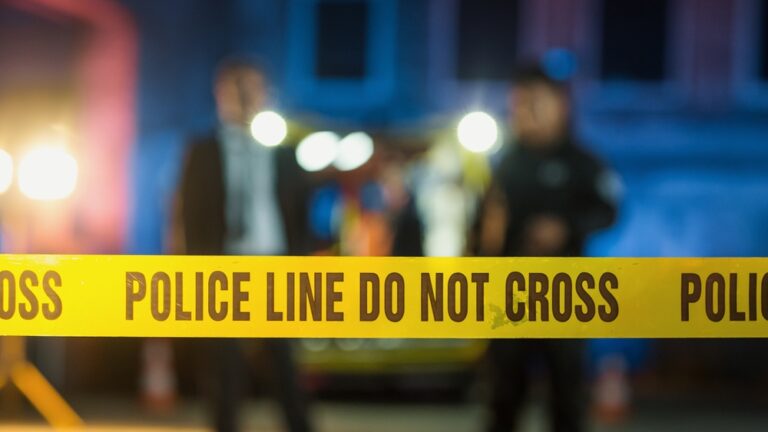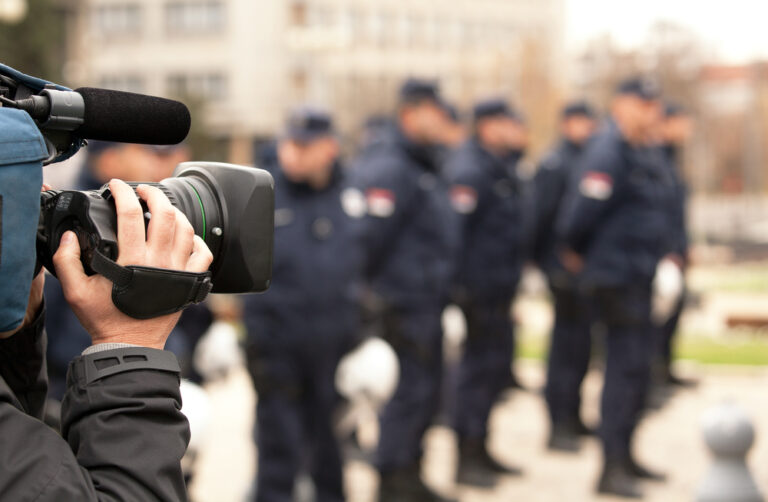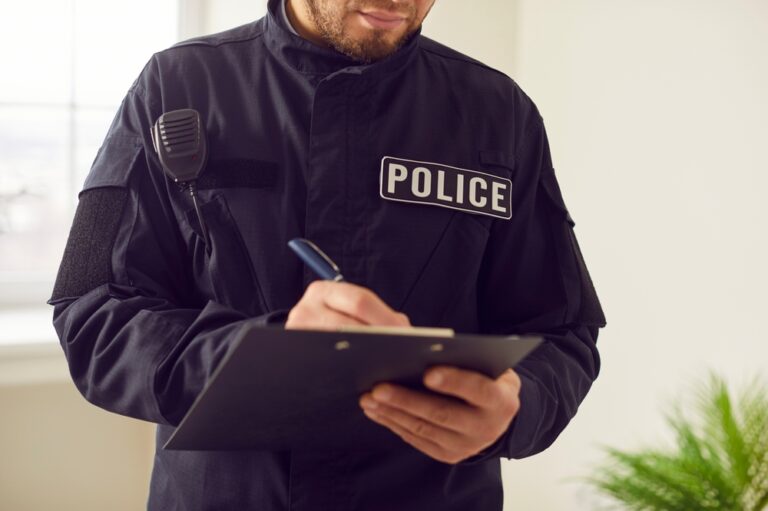
Police Tape 101: Everything You Need to Know
Police tape, commonly known as crime scene tape, is an important tool used by law enforcement to secure…

The need for a tourniquet (TQ) can arise anytime, anywhere. An effective tactical tourniquet is vital to the survival of an individual that has sustained a traumatic injury. Ouch!
Choosing the right tactical TQ is not as simple as buying any old model off the shelf at your local sporting goods store; you must consider factors such as cost and ease of use when determining which model best suits your needs during emergency situations.
I have done a lot of research in this article to give you the best up-to-date information. I am confident that the content is helpful to every person, and not just police, looking to improve their knowledge about tourniquets.
A tourniquet is used to control bleeding from an arm or leg. It may be necessary to use if you are in a situation where you cannot control bleeding by direct pressure.
TQs have been used since antiquity and were used in the American Civil War as well as World War I and II. They are still a critical piece of equipment for both the military and civilians alike.
It is a straightforward concept, but there is some debate about what kind of to use.
The tourniquet is no substitute for professional medical care. Still, it may be necessary if you do not have access to skilled medical personnel.
For all general purposes, there are two types of TQs:
The difference between these is that the pneumatic one has a bladder you can fill with air to restrict the blood flow, much like a blood pressure cuff.
Operating a pneumatic tourniquet requires a lot more knowledge than a non-pneumatic one. This article will focus on the most common one; the non-pneumatic TQ.
While researching this article, I realized it’s hard to find a good nomenclature for the tourniquet. I, therefore, decided to make one myself.
Knowing the name of each part may not be paramount for using it. Still, it is helpful when deciding which one you or your department should get since there are some differences between my top recommendations.
The illustration below features the SOF Tactical Tourniquet, also known as the SOFTT and SOFFT-W.
As you can see, the most important parts of the SOF-T tourniquet are called:
In most cities, the ambulance reaches the scene of the crime or the accident about as fast as the police. Why can’t they administer the TQs while we do the REAL police work?
There are plenty of reasons for this.
According to Wikipedia, the US suffered 693 mass shootings in 2021, leaving 703 people dead and 2,842 injured. If you ever come in a position where you have to assist in a mass shooting, every TQ counts; it’s too late to ask a paramedic for a spare one or to ask a colleague how to use it.
You may work in rural areas where the paramedics might be too far away to help.
There might be situations where you have no signal on your phone or comms, meaning you can’t ask for help. If there is severe bleeding, there is no time to leave the victim and call for help; you have to do it yourself.
As a cop, you often put yourself in harm’s way. You risk getting seriously hurt, like this state trooper that likely saved his own life after he applied a tourniquet on himself after being shot multiple times. You should not only practice putting a TQ on others, you may just as well need it on yourself.
Since I am not a medical professional, I will instead provide an infographic created by Homeland Security on how to apply a tourniquet.
Read each step carefully.
Note that you have to place it above the wound, between the wound and the heart. If you place it under the wound, it will have no effect!
This article, originally published in the Emergency Medicine Journal, states that the military has been on the forefront of reintroducing TQs use into modern practice. There are, however, several uses for them in civilian life as well:
The tourniquet can be applied when there is massive bleeding from one or more extremities that can not be controlled by simple methods.
According to the same article, applying it for longer than two hours can lead to permanent nerve injury, muscle injury, vascular injury, and skin necrosis.
Keeping a it on for six hours or more will likely lead to muscle damage and require amputation.
As a general rule, you should seek to remove the TQ as soon as possible when it is deemed safe. But a medical professional should always make the decision to do so.
After a TQ has been applied, the patient can experience post-tourniquet syndrome. Biomed Central defines it the following way:
“Post-tourniquet syndrome is characterized by a swollen, stiff, pale limb with weakness developing 1–6 weeks after the tourniquet application. High tourniquet pressure levels and applied pressure gradients combined with ischemia may induce more profound damage to muscle than ischemia alone.”
Fold it together, as shown in the picture below. Use rubber bands to keep it in place.
When stored, some good rules are:
If you suspect it to be in suboptimal condition, discard it and get a new one. When applied, it is subjected to a lot of force, and seemingly minor imperfections in the fabric can cause fatal errors.
Choosing a quality product that will be reliable and effective when needed in an emergency is essential. Unfortunately, this means that random cheap brands won’t do. You must play it safe and buy a known brand from a reputable seller.
If you cannot afford to spend around $25 on a quality TQ, you should consider going to Home Depot and buying the materials needed to make your own. That way, you at least know you are using high-quality materials.
In January 2018, Interpol released an orange notice warning about counterfeit tourniquets.
The background for the warning from Interpol was that a TQ broke while being applied on a patient at the scene of a traffic accident in the US. The tension rod (e.g., windlass) broke, making it impossible to tighten the tourniquet.
Most cops know that if there is money to be made, someone will always try to make money off unsuspecting people looking to save some money. To avoid this, you should only buy from known sellers. This link sends you to a selection of TQs by trustworthy sellers on Amazon.
Despite what you might think, NEVER use a tourniquet on a snakebite. It has little to no effect.
Venom is mainly carried throughout the body through the lymphatic system, not through the blood flow.
Treating a snake bite with a tourniquet can cause more damage than not applying one at all.
For more information, read this article from The National Library of Medicine.
The Committee on Tactical Combat Casualty Care (TCoTCCC) are the US military guidelines for trauma life support in prehospital combat medicine. This is what they write on their website about their mission:
“To develop on an ongoing basis the best possible set of trauma care guidelines customized for the tactical environment and to facilitate the transition of these recommendations into battlefield trauma care practice.”
The current guidelines recommend six different tourniquet brands. I will only look into the two most common ones: the CAT and the SOFFT.
This is because these are the two I am familiar with. I do not wish to market such a vital piece of police equipment without being 100% familiar with it. It is, after all, a life or death choice.
Most brands make them in at least three colors; black, orange, and blue.
The black ones are often considered the “tactical” color, preferred by military and police, especially SWAT. The black tourniquet blends in with their uniform, which is particularly important for military personnel.
I do, however, not share the idea that black is the best color for police officers. This is because I often keep mine in my patrol bag. Most other gear in that bag is also black or dark blue, making a black tourniquet hard to find in an emergency. Now, my orange TQ virtually lights up in between everything else.
Another reason to mainly use orange ones is that they are easier to spot for medical personnel in a chaotic situation. Not only because leaving the tourniquet on for too long can lead to nerve damage and other complications, but mainly because the tourniquet indicates that the person wearing it might have massive bleeding that needs to be treated quickly!
Some might think the blue ones are perfect for law enforcement. Think again! Despite matching stereotypic cop colors, the blue ones are meant for training. Actually, gear in bright blue colors is meant to be used in training situations. For example, we use blue guns, knives, batons, and pepper spray canisters when training to know that said items do not represent a real threat.
This means that the blue ones often have been used repeatedly and might no longer meet the standard that an unused one has.
I couldn’t find any data on what TQ the different police departments use. As I wrote earlier, The Committee for Tactical Combat Casualty Care recommends six different brands.
I have only used two different brands. The following paragraph will give you an understanding of what I like about these.
The differences between the CAT and the SOFTT include material, width, and weight. However, the main difference is the velcro strap. The CAT TQ has a velcro strap that can be loosened or tightened around the limb, while the SOFTT-W has a rigid metal bar threaded through a strap.
You can’t go wrong with either one. However, I personally prefer the velcro system of CAT. This is because in a stressful situation, getting the tourniquet tight enough BEFORE tightening it further with the windlass is crucial. With the velcro, you won’t struggle as much to accomplish this.
The SOFFT uses hook and loop straps instead of velcro, which are difficult to operate under stress or when fine motor skills may be compromised.
Many cops prefer to keep their TQs in a holder or a pouch on their duty belts. Some also have it mounted on their plate carrier.
There are several good options on Amazon.
To keep the it from getting subjected to the elements and friction. I keep mine in my bag.
Tourniquets are a lifesaver, especially in emergencies. Every cop should have a one and the knowledge to use it.
Remember to store it correctly.
For more information about police gear, see our articles about important items you need as a police officer and patrol bag contents.

Police tape, commonly known as crime scene tape, is an important tool used by law enforcement to secure…

The police are called daily regarding various incidents of public interest. It is our responsibility to provide the…

Many police officers experience terrible, traumatic events in the line of duty. A significant number of police officers…